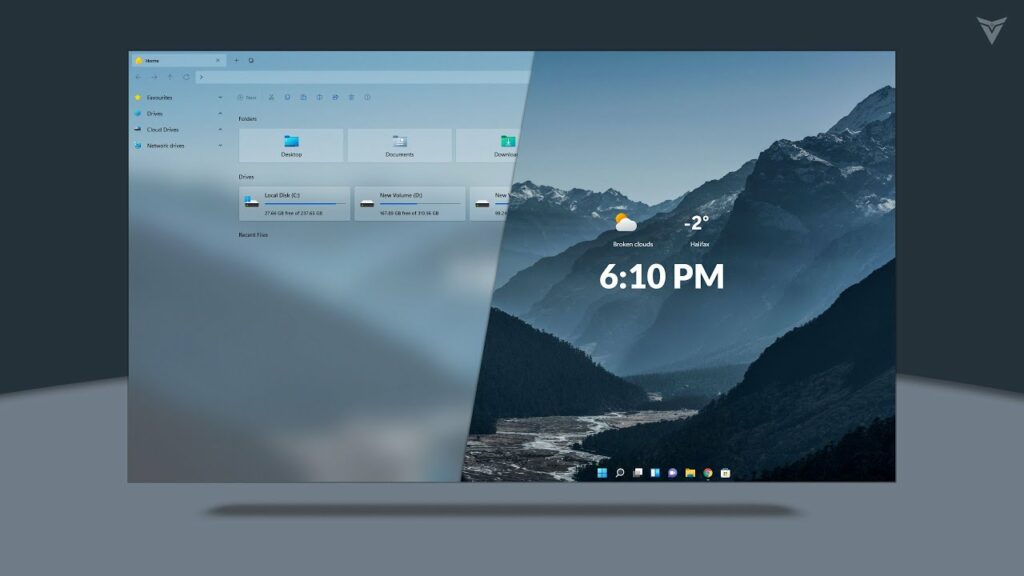Unleashing Personalization: A Comprehensive Guide on How to Customize Windows 10

Introduction:
Windows 10, Microsoft’s versatile and feature-rich operating system, provides users with an extensive array of customization options, allowing them to tailor their computing environment to match their preferences and needs. In this expansive guide, we will navigate the myriad customization possibilities within Windows 10, covering everything from personalizing the desktop and Start menu to adjusting system settings, ensuring that your Windows 10 experience is uniquely yours.
Chapter 1: Personalizing the Desktop Background
The desktop background serves as the visual centerpiece of your Windows 10 experience. In this chapter, we’ll explore the various ways to customize your desktop background, including selecting wallpapers, setting slideshow options, and configuring accent colors to create a visually appealing and personalized workspace.
Chapter 2: Theme Customization in Windows 10
Themes in Windows 10 extend beyond just changing wallpapers. This chapter will delve into the world of theme customization, exploring how to apply pre-installed themes, create custom themes, and adjust theme settings. From color schemes to sound options, we’ll guide you through the process of crafting a cohesive and aesthetically pleasing theme.
Chapter 3: Taskbar and Start Menu Customization
The taskbar and Start menu are essential elements of the Windows 10 user interface. This chapter will provide detailed insights into customizing the taskbar, including pinning and organizing icons, adjusting taskbar settings, and utilizing the taskbar search function. Additionally, we’ll explore Start menu customization, covering live tiles, app groups, and layout adjustments.
Chapter 4: Window Borders and Title Bars
Fine-tuning the appearance of windows, borders, and title bars can significantly impact the overall aesthetic of your Windows 10 experience. This chapter will guide you through customizing window borders, title bar colors, and transparency effects, allowing you to create a cohesive and visually pleasing user interface.
Chapter 5: Icon Customization in Windows 10
Icons play a crucial role in navigating your Windows 10 system. This chapter will explore icon customization options, including changing individual icons, creating custom icon packs, and adjusting icon sizes. We’ll also cover methods for restoring default icons if needed.
Chapter 6: Customizing File Explorer
File Explorer is your gateway to managing files and folders in Windows 10. This chapter will delve into customizing File Explorer views, folder options, and quick access settings. We’ll provide tips on organizing files efficiently and optimizing File Explorer for your specific workflow.
Chapter 7: Lock Screen and Sign-in Options
The lock screen is the first thing you see when you boot up your computer, and Windows 10 offers numerous customization options for this screen. This chapter will guide you through personalizing the lock screen background, choosing app status updates, and adjusting sign-in options for convenience and security.
Chapter 8: Cortana and Search Customization
Cortana, Microsoft’s virtual assistant, and the search function are integral components of Windows 10. This chapter will explore customizing Cortana settings, adjusting search preferences, and utilizing advanced search features. We’ll help you tailor these features to enhance productivity and efficiency.
Chapter 9: Accessibility Customization
Windows 10 is committed to inclusivity, offering a range of accessibility features. This chapter will explore customization options for accessibility, including magnifier settings, narrator preferences, and speech recognition configurations. We’ll guide you through creating a personalized accessibility profile to suit your needs.
Chapter 10: Power and Sleep Settings
Efficient power and sleep settings are crucial for both desktops and laptops. This chapter will provide insights into customizing power plans, adjusting sleep settings, and optimizing battery settings for portable devices. We’ll help you strike the right balance between energy efficiency and performance.
Chapter 11: Task Manager and System Configuration
Fine-tuning system resources and managing startup programs contribute to a smoother Windows 10 experience. This chapter will explore customization options within the Task Manager, covering processes, performance monitoring, and startup applications. Additionally, we’ll delve into system configuration settings for advanced customization.
Chapter 12: Advanced Customization with Registry Editor
For users seeking more advanced customization options, the Registry Editor is a powerful tool. This chapter will introduce you to the basics of the Registry Editor, guiding you through making changes to the Windows registry to unlock hidden features and perform intricate system customizations.
Chapter 13: Third-Party Customization Tools
Beyond built-in customization options, third-party tools offer additional avenues for personalizing Windows 10. This chapter will explore popular customization tools and applications, covering Rainmeter, WindowBlinds, and other utilities that provide extensive customization capabilities.
Chapter 14: Keeping Customizations Across Devices
For users with multiple Windows 10 devices, syncing customizations can streamline the user experience. This chapter will guide you through the process of syncing themes, wallpapers, and settings across different devices, ensuring a consistent and personalized Windows 10 experience.
Chapter 15: Troubleshooting Customization Issues
Customizing Windows 10 can occasionally lead to issues or conflicts. This chapter will address common customization problems, offering practical solutions for troubleshooting. From resolving theme-related issues to fixing icon display problems, we’ll provide guidance on maintaining a smooth customization experience.
Conclusion:
Windows 10 is not just an operating system; it’s a canvas for personal expression and efficiency. This comprehensive guide has covered every facet of customization within Windows 10, from the visual elements of desktop backgrounds and themes to the functional aspects of taskbar organization and system settings. As you embark on the journey of customizing your Windows 10 experience, remember that the true power of this operating system lies in its adaptability to your preferences and needs. Embrace the possibilities, create a workspace that reflects your personality, and let the personalized Windows 10 experience enhance your computing journey.






